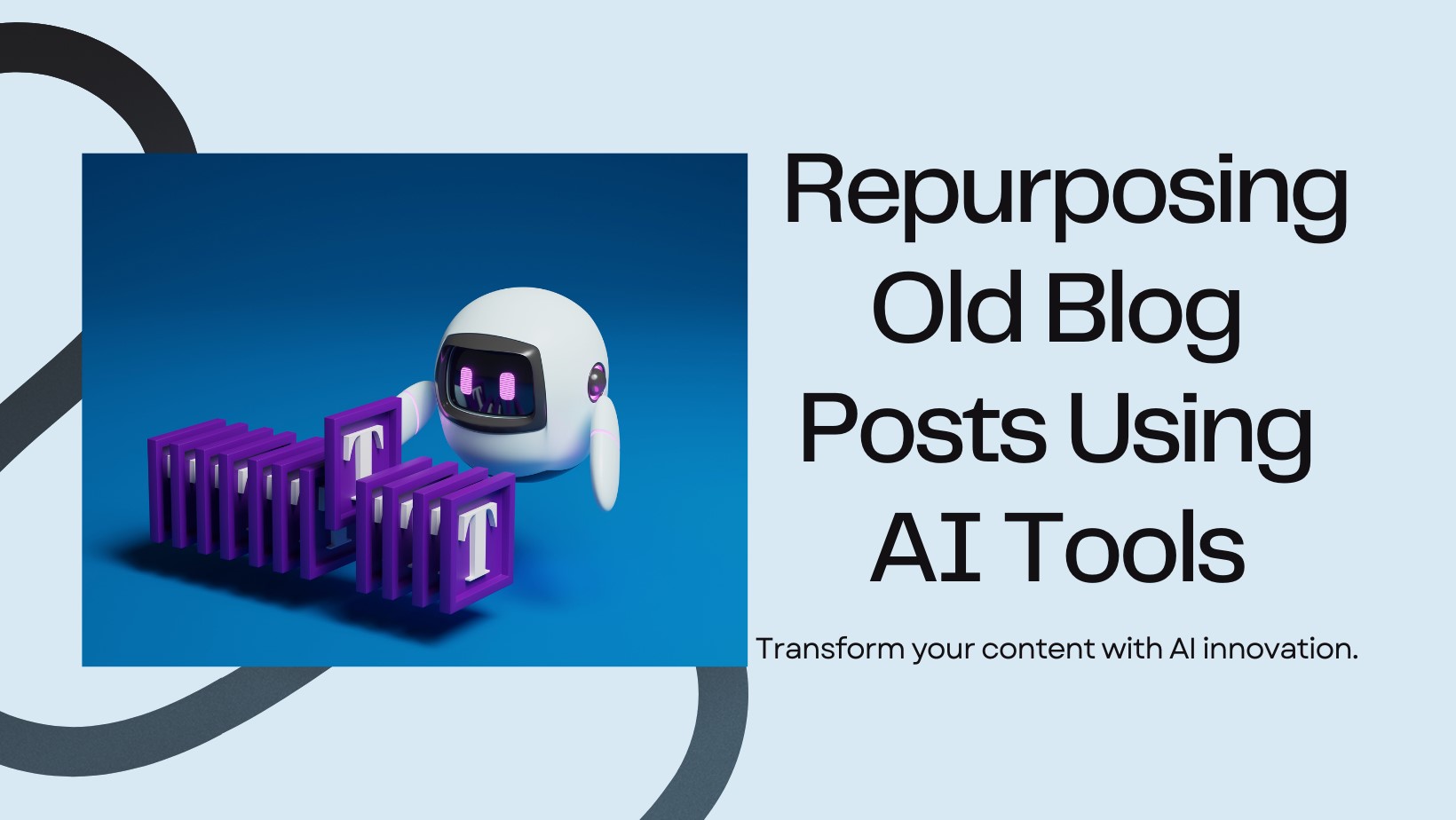
Repurpose Your Old Blog Posts Using AI Tools
Repurposing old blog posts isn't just recycling content; it's a strategic approach to enhancing content sustainability and boosting SEO efforts. By creating a new purpose for existing material, you extend its reach and value while maximizing your content investment.
Consider these:
- According to a study by MarketingProfs, businesses that repurpose content report a 44% increase in content cost efficiency.
- According to a study by Hubspot, regularly revising and optimizing old blog posts can increase organic search traffic by 106%.
- Backlinko research shows that repurposed content generates, on average, 260.7% more interactions than newly created content.
In the decade of AI-driven innovations, the tools available for repurposing content are comprehensive. This article will discuss some creative steps and strategies for leveraging these AI tools to repurpose your old blog posts efficiently.
1. Look at Old Blog Posts
First, check your old blog posts carefully. Don't just skim them, but understand how well they're doing. Look at how many people read them and what they say about them. Find the ones that people like the most. These are the ones you can use again later. Understanding how people interact with your posts helps you decide what to do next.
2. Repurpose Using AI Tools
AI tools can change how you reuse old blog posts. These six strategies below give fresh ideas for making your old content appealing to different people.
Content Summarization
AI summarization tools offer an innovative solution for condensing lengthy blog posts into bite-sized nuggets of information. You can create compelling teaser content customized for social media snippets or enticing email newsletters by extracting key insights and core ideas. This approach saves time for your visitors and serves as a potent hook to drive traffic back to your website for deeper exploration.
Generating Visual Content
Converting text-based blog posts into visually captivating formats like infographics can significantly enhance their appeal and accessibility. AI-powered design tools enable you to convert complex concepts into eye-catching infographics or dynamic slideshows effortlessly.
Leveraging visual storytelling, you amplify the impact of your content, attracting visitors and promoting interactions. Whether it's intricate data visualizations or stunning graphics, these tools empower you to convey your message with unparalleled clarity and creativity.
Audio and Video Conversion
With text-to-speech and AI voice generator, you can conveniently convert written content into podcasts or audio clips. These tools provide an efficient way to repurpose your existing content, reaching audiences who prefer audio formats or consume content on-the-go. Polishing your content using other AI tools like video background noise remover and automatic video editors can enhance the quality of your audiovisual content.
Language Translation and Localization
Expanding your visitor reach goes beyond geographical borders, and AI offers a potent solution through language translation and localization. Translating blog posts into different languages opens doors to new demographics and untapped markets.
Moreover, adapting content to suit cultural preferences ensures coherence with diverse groups, transcending language barriers to create meaningful connections.
Content Expansion and Updates
Content evolution is a continuous journey, and AI tools offer invaluable assistance in expansion and updates. You gain insights into areas ripe for expansion and enhancement by using AI algorithms to identify gaps in existing content. Whether exploring a topic more seriously or addressing emerging trends, AI-driven content expansion ensures your material remains comprehensive and valuable.
3. Implementing Repurposed Content
Successfully implementing repurposed content involves the following:
Tip #1. Maintain Consistency in Branding and Voice
Maintaining consistency in branding and voice across repurposed content is essential for reinforcing brand identity and maintaining visitor trust. Ensure that repurposed material matches your brand's tone, style, and messaging to maintain a cohesive brand image across different formats and channels.
Tip #2. Test and Measure the Effectiveness of Repurposed Content
Utilizing A/B testing enables you to compare different repurposing approaches, identifying the most successful tactics for interactions and conversion. Utilizing analytics tools provides invaluable insights into visitors' behavior, enabling you to track activity levels and conversion rates and refine your strategies accordingly.
Tip #3. Integrating Into Your Content Calendar and Distribution Channels
Integrating repurposed content into your content calendar and distribution channels ensures it matches your overall content strategy. You maximize its visibility and impact across various platforms and touchpoints by strategically scheduling and disseminating repurposed material.
Tip #4. Optimize for Different Platforms and Mediums
Customizing repurposed content for various platforms and mediums maximizes its impact and value. Adapting content format and length to fit different visitor preferences and consumption habits ensures optimal participation across diverse channels. Whether it's personalizing content for social media, email newsletters, or other platforms, optimizing for specific characteristics enhances visibility and effectiveness, amplifying your content's reach and value.
Takeaways
Repurposing old blog posts is not just a practical approach; it's a strategic imperative for content sustainability and SEO optimization. As the content marketing landscape evolves, AI-driven strategies offer unprecedented opportunities for innovation and efficiency. Businesses can unlock new dimensions of visitor participation and achieve sustained success by utilizing these techniques.

